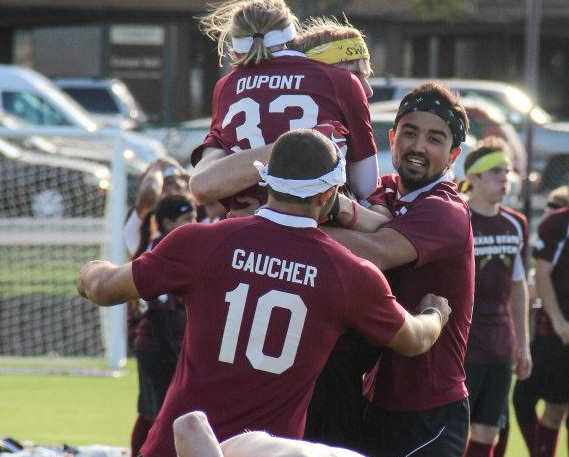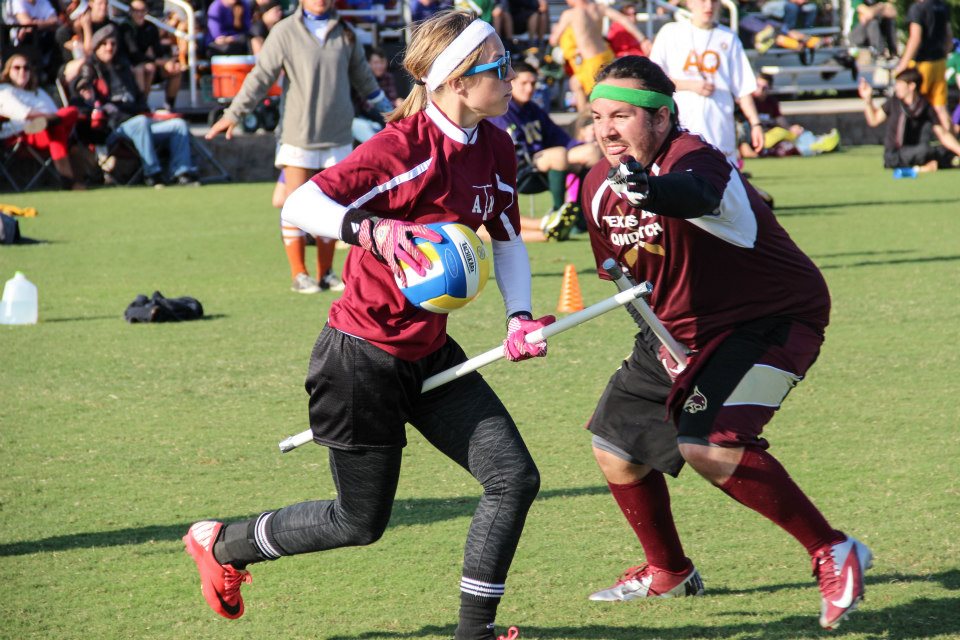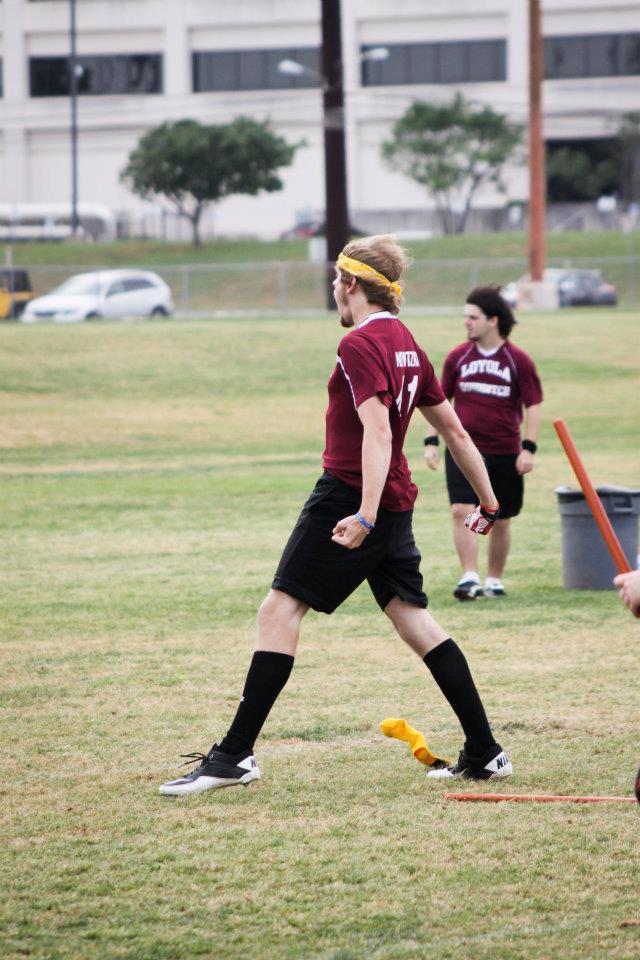- Rule, Britannia, no more?
- Unpopular Opinions: US Quadball Cup 2023
- Proven Contenders: University of Virginia
- Proven Contenders: Rutgers University
- Proven Contenders: University of Michigan
- Proven Contenders: Creighton University
- Different Perspectives: A Look Inside USA Ultimate
- Antwerp QC, Much of Belgian Core, Leaves Competitive Quidditch
For Texas A&M, It Isn’t Lonely at the Top
- Updated: November 27, 2012


Surrounded by a community ripe with talent, Texas A&M has blossomed into the sport’s top team. Credit: Lauren Carter
After a semester of parity at the top of the quidditch world following No. 6 University of Texas – Austin’s injury-plagued start, a top dog has finally emerged. Following a run-away victory at the NCBA’s Collegiate Cup, Texas A&M became an almost unanimous No. 1 amongst our writers. We thought it was time to breakdown the World Cup favorites at the season’s halfway point.
This year has been a bumpy road for just about every top team, full of injuries, upsets and surprises. But, amid all the shocking downfalls and big wins, one team from the Southwest is somehow a perfect 20-0 midway through the season.
There’s no pretending Texas A&M is a darkhorse. They’ve been on a steady track upward since they first started competing on the intercollegiate level against LSU in 2009. A&M has run the gauntlet of SW success, with wins at the Diamond and Collegiate Cups already this season, and went as far as the World Cup V semifinals in 2011.
Those with only a cursory knowledge of the team may have predicted a drop off following last year’s graduation. A&M lost its starting beating combo of Reed Duncan and Mollie Lensing along with chaser Nichole Galle.
But one of A&M’s greatest strengths is the sheer amount of talent and depth that exists in its program. Standing just behind Mollie and Reed in the national spotlight were Rachel Harrison, Mathieu Gregoire and a whole host of other great beaters. Becca DuPont was great last year, but has reached elite status over the past few months. It seems that no matter who leaves, there will always be another star to take their place.

After ceding the spotlight to the team’s seniors last year, Becca DuPont has become a top player at her position. Credit: Lauren Carter
The quality of the program is no mere coincidence. What they have built over at College Station is not simply a great team, but an excellent program to support and supplement it. Emerson’s intramural league is often brought up as the pinnacle of such programs, and A&M is right up alongside of them, providing their players with constant high-quality competition sure to boost their play.
They also have the personnel for the job. Mollie Lensing is one of the top quidditch coaches out there, and was well-deserving of her co-captain title on Team USA. David Gutierrez leads the Silver Phoenix, A&M’s second team, with the same level of intensity he’s become loved and hated for in the quidditch community. Some teams have “coaches” because a player is hurt. Some teams have “honorary” coaches. Built when A&M brings along a coach, they are a coach in the truest form of the word.
As more and more schools develop second teams, the value of the Silver Phoenix to A&M quidditch becomes ever more apparent. The Phoenixes were formed shortly before WCV, partially because A&M simply had too many good players for just one team.
Unfortunately, after going 3-2 in some exciting bracket play, they got stuck in the “Teams from Texas” side of the bracket, where Texas knocked out before being eliminated themselves by A&M. Still, the experience showed the value of giving a team’s younger, less experienced players a chance to learn against top opposition.
This team is also about as motivated as an undefeated team in arguably the sport’s toughest region can get. You may think you remember A&M against Middlebury, but that game is burned into the memory of every single Aggie quidditch player. Coming so close instilled a burning desire in this team to make sure they win it next time, and they won’t rest until they do.
Strategically, A&M’s clearest roots are in soccer. Full contact soccer, that is. Their passing and positioning never give the opposing defense a break. Players like Drew Wasikowski and Kifer Gregoire will put any offenders who dare to approach their goals on the ground. They have a seemingly endless supply of skilled beaters who are always either holding a ball or about to be.
The final piece, of course, is seeking. A&M’s seeking game isn’t just on the same high level of their chasers and beaters. They’re on another level. Although he now plays for Silver, Isaac Salazar, A&M’s most notable seeker, is just one example of the team’s strength at the position. Fast as a bullet and relentless, anyone watching Salazar seek can’t help but feel his intensity. That intensity has carried over to A&M’s current rotation of seekers, all of whom refuse to lose and use their varying talents to their advantage.

Andrew Hryekewicz, seen here after a grab at the Lone Star Cup, is just one of many talented seekers that have been developed in the A&M program. Credit: Lauren Carter
Things are looking pretty great for A&M right now, and if the World Cup was today, they’d be the best bet to win. They have the skills, depth, and record to back it up. As we head into winter, when many teams take a bit of a break thanks to school holidays, remember this: A&M doesn’t stop training. Will you?

5 Comments